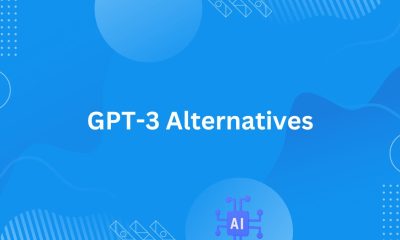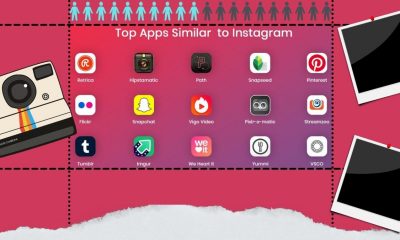Grow Your Business
ERP System Integration
ERP (Enterprise Resource Planning) systems help you to transform, integrate and scale your business. Industries that are into wholesale distribution, retail, and eCommerce are using ERP solutions. While it was eventually started as a system to automate core back-office functions, ERP has expanded to business intelligence that can also handle the front-office functions like eCommerce, sales and marketing automation. Due to this expanding scope of functionality in ERP systems, it is not enough if you don’t have your ERP application integrated with other business platforms like eCommerce or CRM, especially if you are a retailer, distributor or manufacturer.
Integrating different pieces of software with an ERP is complicated because each piece of software has its own clearly defined set of rules about how it wants to manage and use data. The job of the ERP integrations is to sync this data in the correct format while ensuring it remains accurate and useful. Doing this at scale requires a system that is organized and logical and that your team can maintain over time.
For example, a business might need to integrate its ERP with its CRM (Client Relationship Management) system. This connection would enable it to track critical client data in their ERP and share data contained within their ERP with their CRM. Financial data, for example, might be synced into their CRM to help teams better manage their client relationships.
Another use case might involve supporting a quote-to-order system. This requires the organization to sync product data across the CRM and ERP.
Is ERP a part of the Smart Factory concept?
While ERP systems can be used in a smart factory, they are not necessarily considered a core component of the smart factory concept. A smart factory typically refers to a highly automated and connected manufacturing environment that leverages technologies such as IoT, AI, and robotics to optimize production processes and increase efficiency. An ERP system may be used within a smart factory to help manage business processes and data.
Why is ERP Integration Important?
The aim of an ERP system is to create a single source of truth for an organization. The benefits of achieving this are huge, including real-time reporting, increased productivity, reduced operational costs, and improved business insights. However, an ERP system cannot do this effectively without data – and integrations are how that data gets into the system.
When implemented effectively, ERP integration offers many benefits:
- Breath New Life into Legacy Systems – By connecting a legacy system to a CRM, it can continue to be useful. This means that if an old system works well, a business can continue to use it. Otherwise, the business may need to make an unnecessary upgrade; By instead integrating the legacy system, the business saves the cost of the license and training for the new system and prevents disruptive changes to its established processes.
- Improved Mobility – A fully-integrated ERP enables employees access to data on the move that would otherwise be stuck in a siloed legacy system.
- Easy to Add New Integrations – With the right integration system, businesses can move beyond the most commonly used products and connect anything to their CRM. This enables them to exercise greater flexibility when choosing the right tools for their business.
- Improved Decision-Making – ERP integration allows businesses to access real-time data from across their systems in one central location. Better integration means more data and better decision-making.
- Ditch Manual Entry – Manual data entry is not only a huge drain on resources but also a source of many errors. Instead, businesses use ERP integration to move data around automatically and efficiently. This enables them to use their time and resources to use that data effectively, rather than just managing it.
- Reduced Employee Training – Most employees will only need to access data through the ERP system. This significantly reduces the number of software that the average employee needs to be trained on.
Without ERP integrations, businesses have two choices. They can either leave data sitting in silos, with all the problems that entail (no visibility, poor productivity, no single source of truth), or they can rely on moving data manually. Manual entry leads to errors, reduced collaboration, and the inability to access real-time data.
ERP Integration Methods
Most ERPs come with pre-built integrations, but these are limited in number and scope. Unless a business sources their entire software stack from one vendor, or only uses the most popular products on the market, it is unlikely a single ERP will come pre-built with every integration a business needs.
In most cases, a business will use a mix of legacy systems and modern SAAS. This mix of systems is a result of different departments managing their own data and software needs, signing up for different applications as and when they need to to achieve their objectives. This enables fast growth but becomes a problem once the business grows to a size where it wants to integrate with an ERP.
Swapping all these systems for ones that work with a specific ERP out of the box may not be practical, affordable, or desirable. Instead, businesses need to choose a method that enables them to create and manage the integrations they need themselves.
Businesses typically use one of several different ERP integration methods:
Point-to-Point Integrations
Point-to-point integrations connect one specific piece of software with another. This can be quick and effective when there are only two pieces of software to connect, but that is rarely true for modern organizations.
Because each piece of software requires a connection to every other piece using its data, the number of connections needed scales exponentially as the volume of software increases. Many enterprises use hundreds of different software solutions across the organization; creating and maintaining point-to-point integrations for even a fraction of these becomes a huge burden on the IT department.
Enterprise Service Bus (ESB)
Another solution is the Enterprise Service Bus or ESB. This is an on-premises software architecture that enables different applications to communicate with each other and share data. Data comes onto the bus in a specific format, often XML, and there are adapters that sit between the bus and the other software (such as the ERP) that translates their data to/from XML (or another language) and the format they require.
ESBs, while ideal for on-premises integrations (vertical scaling), do not scale well horizontally. This makes them a poor choice for businesses that need to integrate with SaaS solutions and third parties. ESBs also add an additional layer of complexity, which is not ideal for a solution that aims to simplify the way a business uses its data.
Integration Platform as a Service (iPaaS)
iPaaS platforms offer a cloud-based approach to integration, enabling businesses to sync apps faster and easier than using an ESB. iPaaS platforms have many benefits: they typically require no coding, are designed to connect ERP systems to SaaS products, and are flexible and inexpensive. With no on-premises hardware requires, these are ideal for many modern businesses.
Of course, iPaaS platforms like DreamFactory have many more use cases beyond ERP integration.
Which Integration Method Is Right For Your Business?
When considering which method (and specific vendor) to use, businesses should consider the following:
- Technical Resources – An ESB solution will require significantly more in-house resources than iPaaS. What technical resources do you have on your team? How will you maintain your integration strategy over the long-term? Remember, data points and tools can change; no integration method is a one-and-done solution.
- Budget – ESB solutions will require higher upfront costs than iPaaS, which is more likely to be paid for in a subscription model. Don’t forget to budget for the employee time maintaining your solution will require.
- Integrations Needed (Present & Future) – How many custom integrations do you need? How is this number likely to grow over time? Do you need to scale vertically or horizontally?
- Training – What are the training requirements for your chosen solution?
- Security – How will the chosen integration method keep your (and your customer’s) data safe?
Typically, most non-Enterprise businesses launching an ERP implementation project for the first time will want to choose an iPaaS solution.
DreamFactory has enabled thousands of businesses to benefit from ERP integrations without the hassle of manually creating the APIs they need themselves. Would you like to know more? Schedule a call with the DreamFactory team today.
3 ERP Integration Best Practices
Best Practice #1: Clean Up Data Before Integration
The quality of your data will define how much of a benefit your ERP system is to your business. Before integration begins, you have a one-time opportunity to clean up your data, check for mistakes, and remove duplicates. Doing this requires significant resources, but is worth it to ensure that the data on which you will be basing your future strategic decisions is accurate.
Best Practice #2: Analyze Integration Requirements Carefully
Make an inventory of your systems and how you need them to integrate and use this map to help you decide on the correct way of integrating them. Once you have chosen a solution, prioritize the integrations that will deliver the biggest benefit to your business first. Once your initial integrations are complete, your business should continue to consider integration when evaluating future software solutions.
Best Practice #3: Security First
The security of your data is vital to the long-term health and reputation of your business, and your ERP integration must reflect that. Prioritize security and ensure that all your endpoints and integrations are protected. This is where an iPaaS solution has an advantage, since the provider of the software will manage the updating and security of that software.
-

 Marketing Tips2 days ago
Marketing Tips2 days agoWhat is my Instagram URL? How to Find & Copy Address [Guide on Desktop or Mobile]
-

 Business Imprint3 days ago
Business Imprint3 days agoAbout Apple Employee and Friends&Family Discount in 2024
-

 App Development3 days ago
App Development3 days agoHow to Unlist your Phone Number from GetContact
-

 News4 days ago
News4 days agoOpen-Source GPT-3/4 LLM Alternatives to Try in 2024
-

 Crawling and Scraping4 days ago
Crawling and Scraping4 days agoComparison of Open Source Web Crawlers for Data Mining and Web Scraping: Pros&Cons
-

 Grow Your Business2 days ago
Grow Your Business2 days agoBest Instagram-like Apps and their Features
-

 Grow Your Business4 days ago
Grow Your Business4 days agoHow to Become a Prompt Engineer in 2024
-
Marketing Tips2 days ago
B2B Instagram Statistics in 2024








